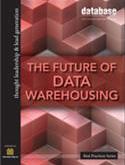
Since the 1980S, companies have invested millions of dollars in designing, implementing, and updating enterprise data warehouses as the foundation of their business intelligence systems. The founding principle of the data warehouse was simple: a single version of the truth to support corporate decision making. Today, the world of decision making, along with the data sources and technologies that support it, is evolving rapidly.
The future of data warehousing is not only being shaped by the need for businesses to deliver faster data access to more users, but the need for a richer picture of their operations afforded by a greater variety of data for analysis. The unstructured and semistructured data that companies are collecting from social media, remote sensors, web traffic, and other sources needs to be integrated and combined for analysis to produce valuable insights for better decision making.
A new data warehousing architecture is emerging, along with a new generation of technologies and best practices, to support the requirements of big data and the need for faster decision making
Table of Contents from this Best Practices Include:
- Data Warehouse’s New Role in the Big Data Revolution by Joe McKendrick
- Reinventing the Enterprise Data Warehouse for Real-Time Decisions by SAP
- How to Free Up Data Warehouse Capacity —And Your Budget—With Hadoop by Syncsort
- The Data Warehouse U-Turn by Appfluent
- Analytics Aren’t Agile by Delphix
- Logical Data Warehouses Increase Agility and Reduce Costs by MarkLogic
- Why 2014 Is the Year of the Archive by RainStor
- Accelerating the Data Warehouse Loading Process for More Insightful Analytics:
- The Answer Lies in Using the Right Integration Tools by Attunity